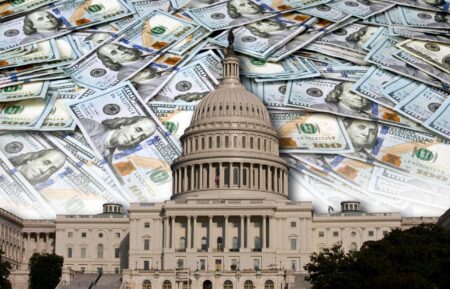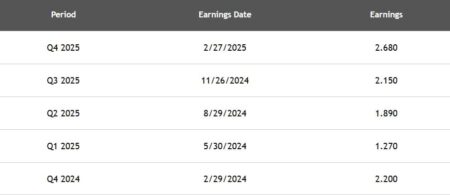We discuss the delicate balancing act between minimizing taxes whilst maximizing wealth with Jim Davis, senior wealth advisor at Aspen Wealth Management based in Fort Worth, Texas.
Light: Investors are always looking for ways to minimize their tax burden, but there’s a fine line between tax efficiency and maximizing overall wealth. Can you start by explaining why investors shouldn’t focus solely on tax minimization?
Davis: The only way to legally pay zero taxes is to make zero income—and, of course, that’s not exactly a desirable strategy for most people. So, investors should focus on maximizing their after-tax wealth instead of aiming for zero taxes. The ultimate goal of investing is long-term growth that supports your financial goals, and sometimes that means incurring taxes along the way. If investors prioritize tax minimization over total returns, they may actually end up with lower overall wealth in the long run. The key is to strike a balance—implementing smart tax strategies while still positioning yourself for strong investment growth.
Light: That makes a lot of sense. What are some of the most effective ways investors can limit their tax liability without sacrificing returns?
Davis: There are several strategies that investors—especially high earners in the 32%–37% tax brackets—can use to maintain tax efficiency while still growing their portfolio. Some of the most effective include maximizing contributions to retirement accounts, investing in tax-free income sources like municipal bonds, funding a health savings account, or HSA, and utilizing tax-loss harvesting. Each of these strategies allows investors to either defer taxes, reduce taxable income, or offset gains with losses. The right combination depends on an individual’s income, investment strategy, and long-term goals.
Light: Let’s dive into retirement accounts first. How do contributions to tax-advantaged accounts help investors manage their tax burden?
Davis: Contributing to tax-favored retirement accounts, like 401(k) or 403(b) plans, is one of the most straightforward ways to lower your tax bill. Every dollar contributed to a traditional 401(k) or 403(b) reduces taxable income for the year. In 2025, the contribution limit is $23,500, with an additional $7,500 catch-up contribution for those over 50. These funds grow tax-deferred, meaning investors don’t pay taxes on capital gains, dividends or interest earned within the account until they withdraw the money in retirement. That allows for compounding growth without an annual tax drag, making it a powerful tool for building wealth.
Light: What about tax-free income sources? How do municipal bonds fit into a tax-efficient investment strategy?
Davis: Municipal bonds can be an excellent option for high earners seeking to generate tax-free income. Interest earned from municipal bonds is exempt from federal income tax, and if you live in a state with no income tax, that income can be entirely tax-free. While such earnings do increase your modified adjusted gross income (MAGI), which can in turn affect your eligibility for certain tax credits and other considerations. The exemption makes them particularly attractive for those in higher tax brackets, as the after-tax yield can sometimes exceed that of taxable bonds. However, investors should also consider their overall portfolio diversification when deciding how much to allocate to municipal bonds.
Light: Another option you mentioned is funding a health savings account (HSA). Why is this an attractive strategy?
Davis: HSAs are often overlooked but are incredibly valuable for tax efficiency. For high earners with a high-deductible health plan, an HSA can act as a secondary retirement account, providing future tax-free funds for healthcare expenses. They offer a triple tax advantage: contributions are tax-deductible, investments grow tax-free, and withdrawals are tax-free when used for qualified medical expenses. For 2025, the contribution limit is $8,550 for families, with an additional $1,000 catch-up contribution for those 55 and older. Unlike Flexible Spending Accounts (FSAs), HSAs don’t have a “use-it-or-lose-it” rule, meaning funds can remain invested and grow over time.
Light: What about tax-loss harvesting? How does that strategy help investors reduce their tax liability?
Davis: Tax-loss harvesting is a strategy where investors sell underperforming assets at a loss to offset capital gains elsewhere in their portfolio. This can reduce the overall tax burden on investment gains, allowing for better after-tax returns. So, there can be a silver lining when investments are in a losing position: you may be able to accept the loss in order to offset gains in other parts of your portfolio. This tactic, known as tax-loss harvesting, can be employed to reduce the overall capital gains in your portfolio, thus reducing your capital gains tax bill. However, investors need to be mindful of the SEC rules covering replacement of the sold assets when their longer-term outlook is positive.
Light: It sounds like tax planning isn’t just about reducing taxes—it’s about positioning investments for long-term growth while keeping taxes in check. How do you recommend investors balance these priorities?
Davis: That’s exactly right. Tax efficiency should always be a part of the conversation, but it shouldn’t dictate an investor’s entire strategy. Instead of making investment decisions based solely on tax consequences, investors should optimize their after-tax wealth. That means working with a fiduciary financial advisor who can align tax planning with investment management. Your advisor should collaborate with your tax professional to make sure that strategies like tax-loss harvesting, retirement account contributions, and asset location work together to maximize long-term returns..
Light: Do you have any final thoughts for investors looking to improve their tax strategy?
Davis: Remember that taxes are a part of investing, but they shouldn’t dictate your entire strategy. Focus on after-tax wealth rather than just tax minimization. Work with trusted financial and tax professionals to make sure your investments are structured efficiently while still positioning yourself for the highest possible returns. Most importantly, start planning early—small tax-efficient decisions today can have a big impact on your wealth over time
Read the full article here











